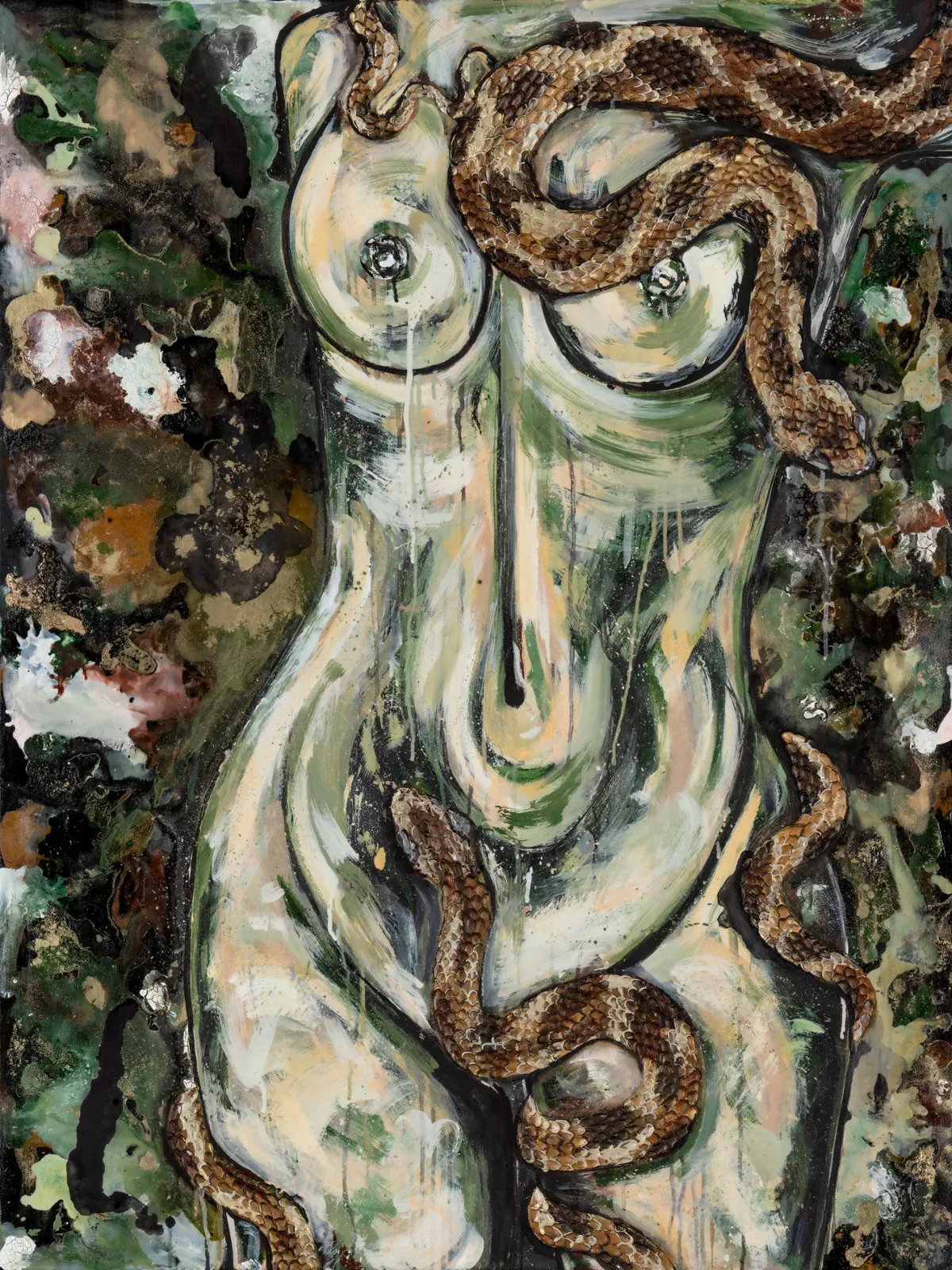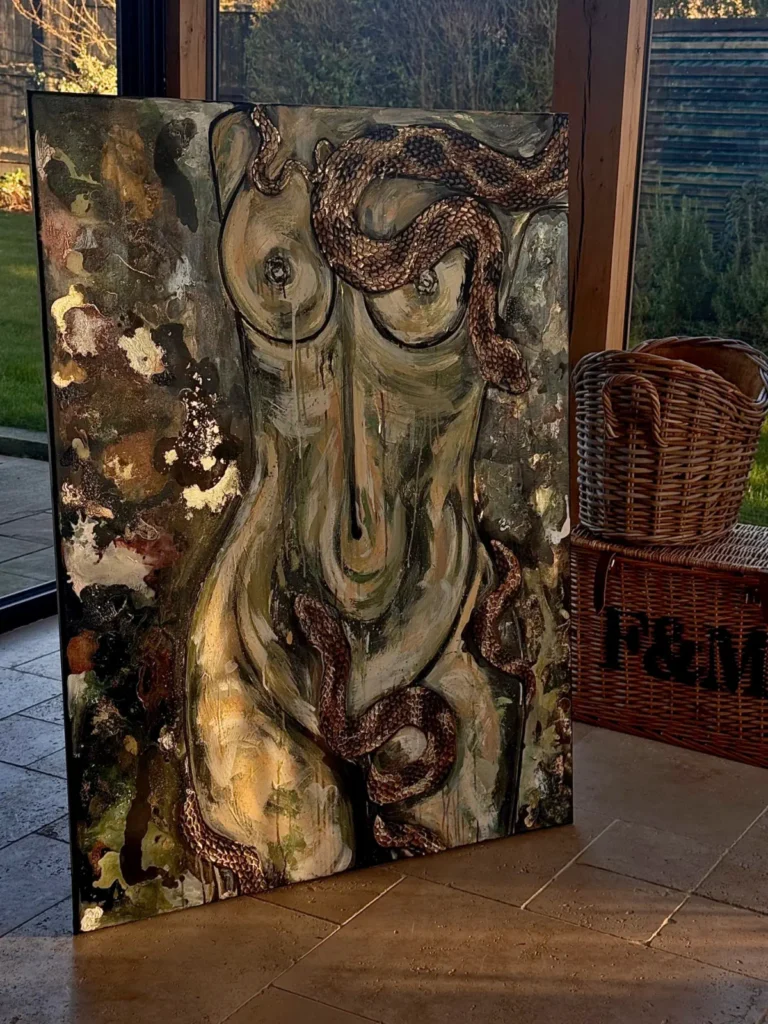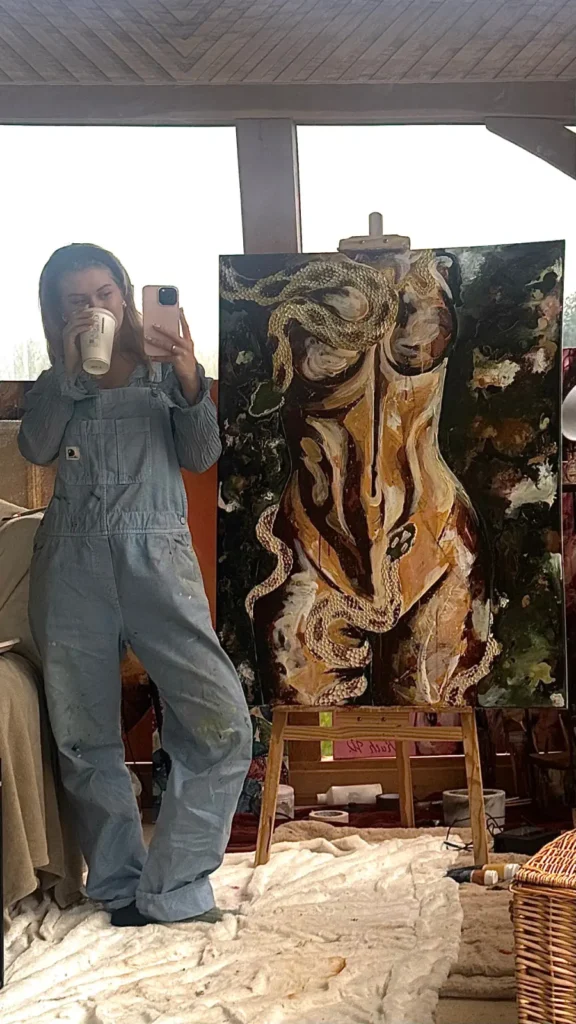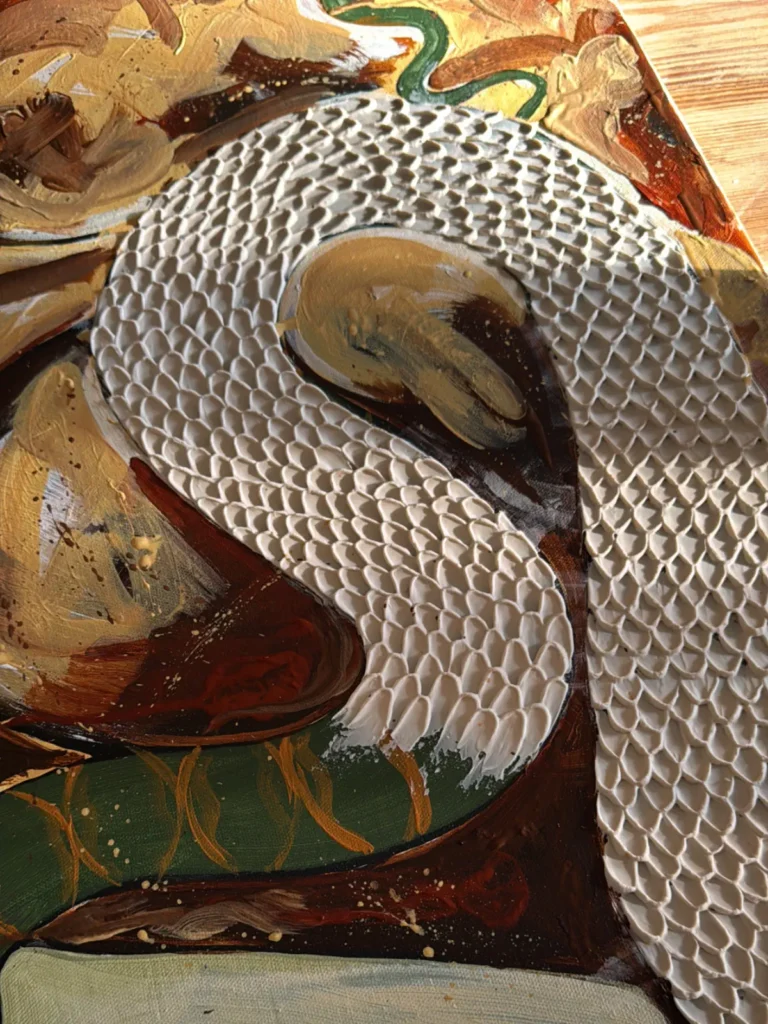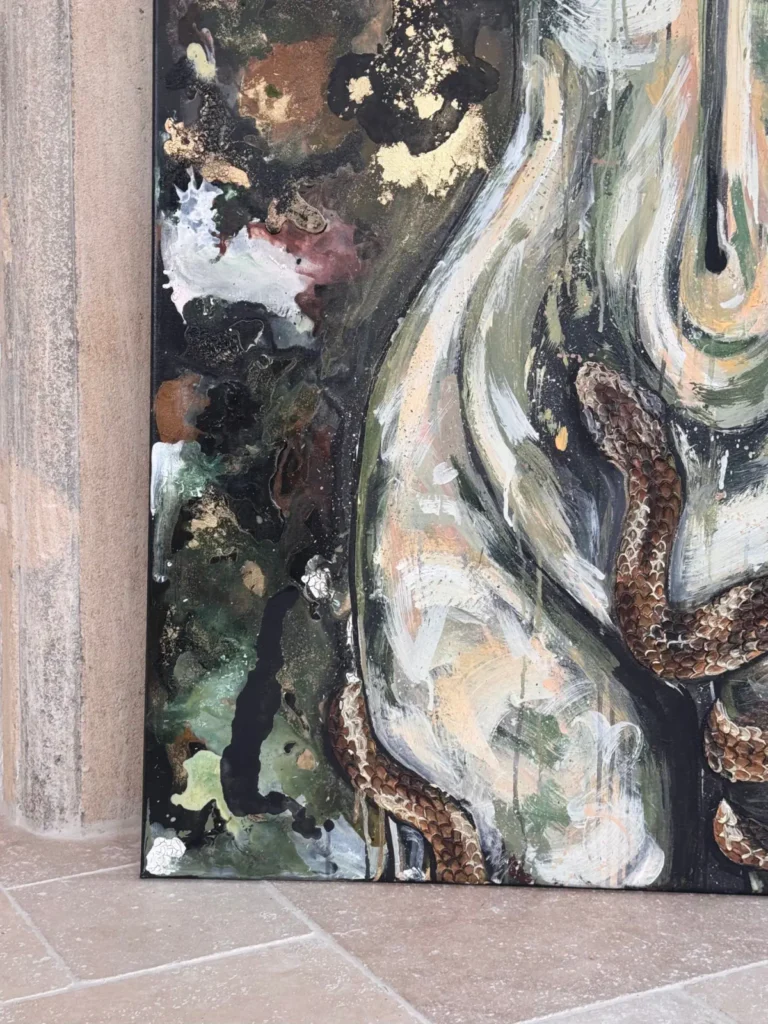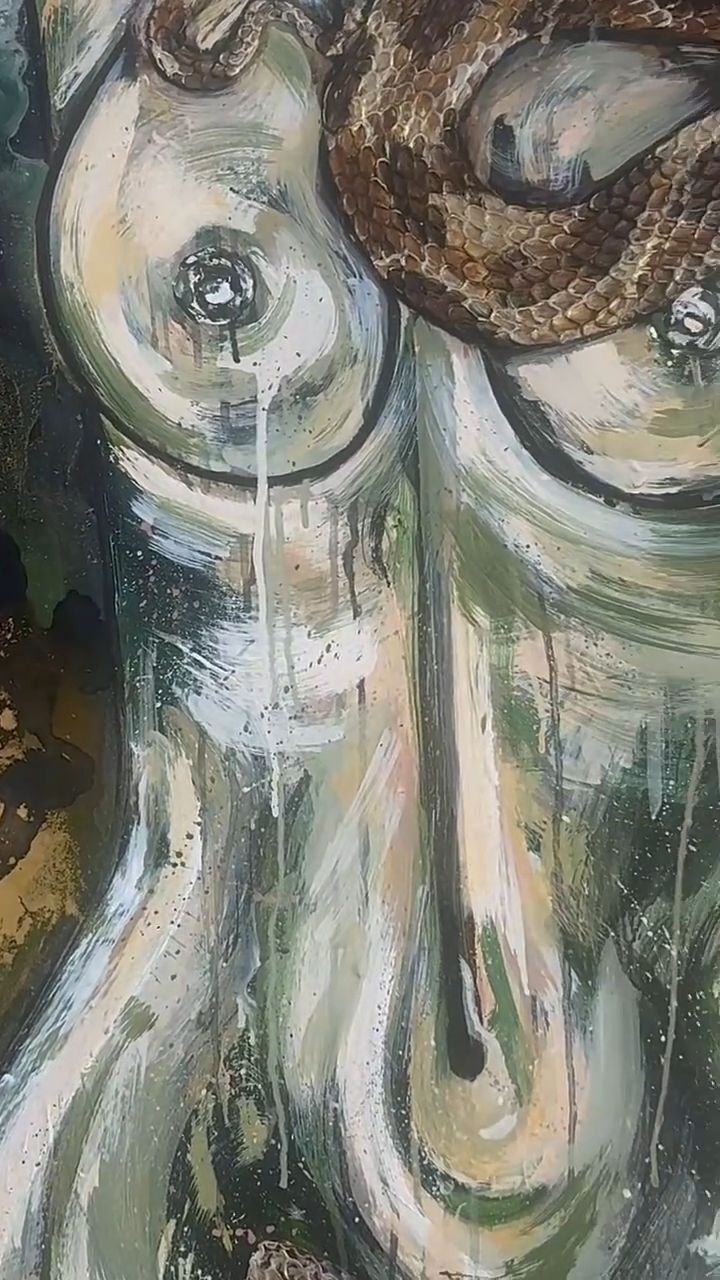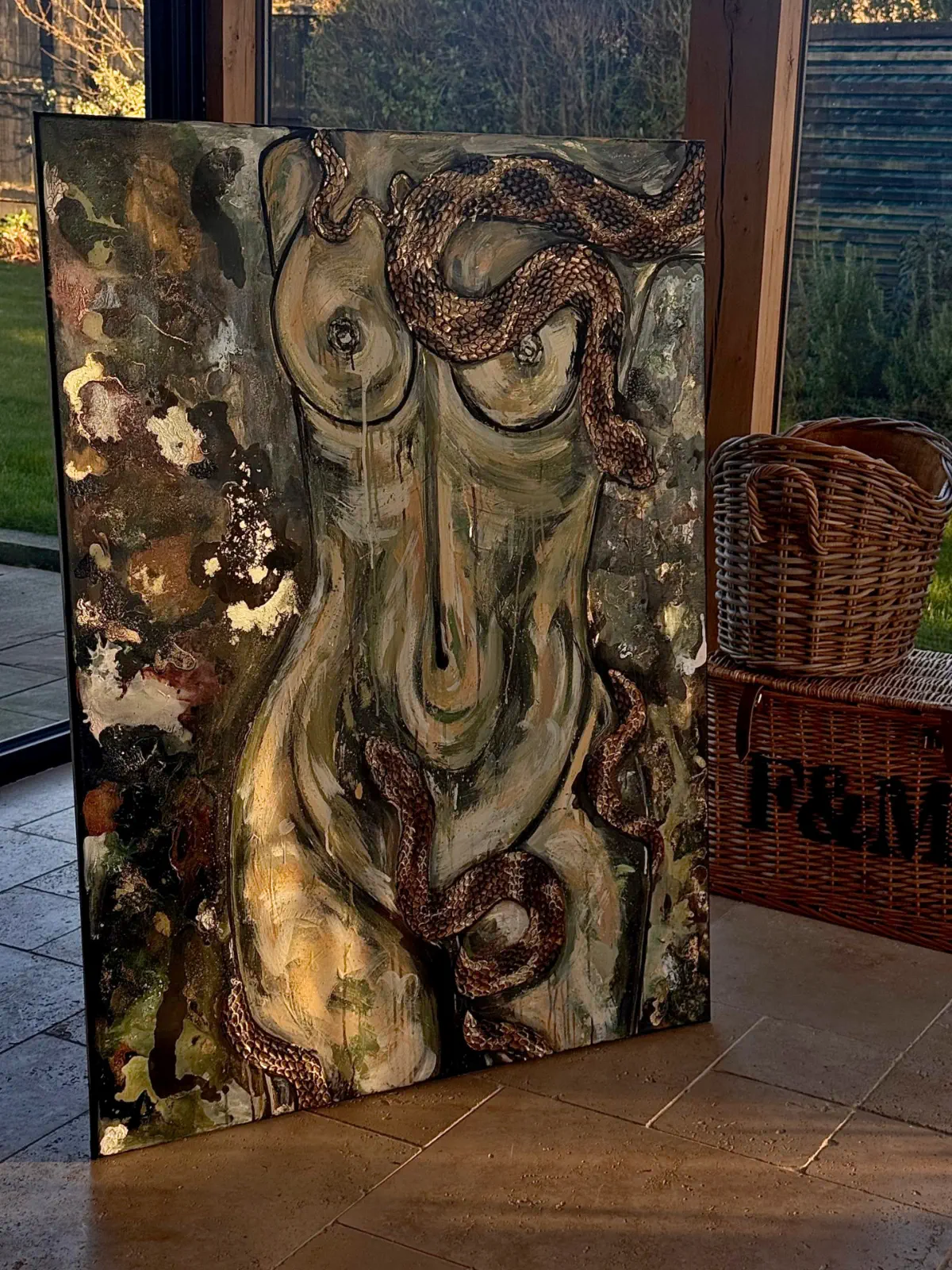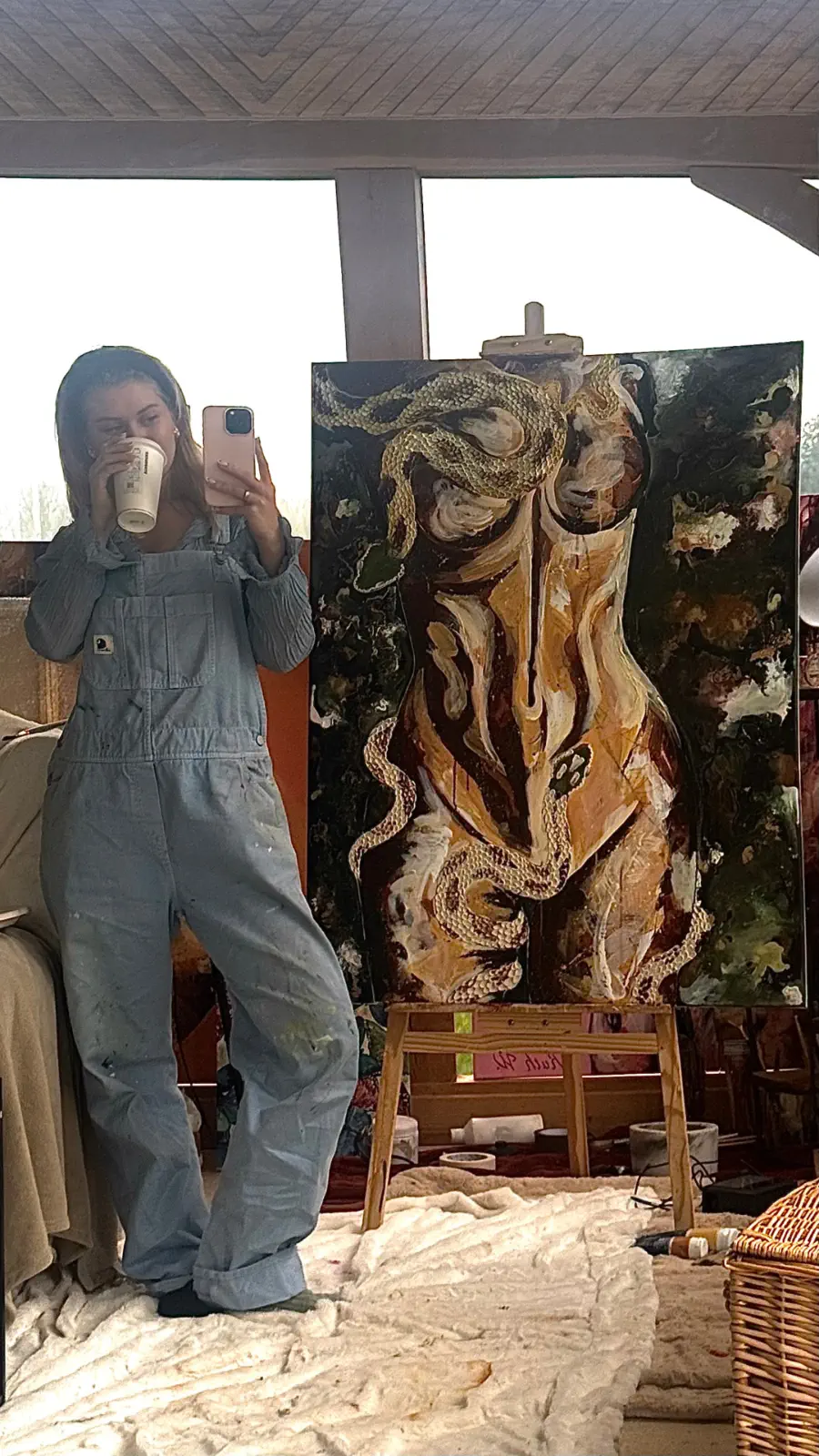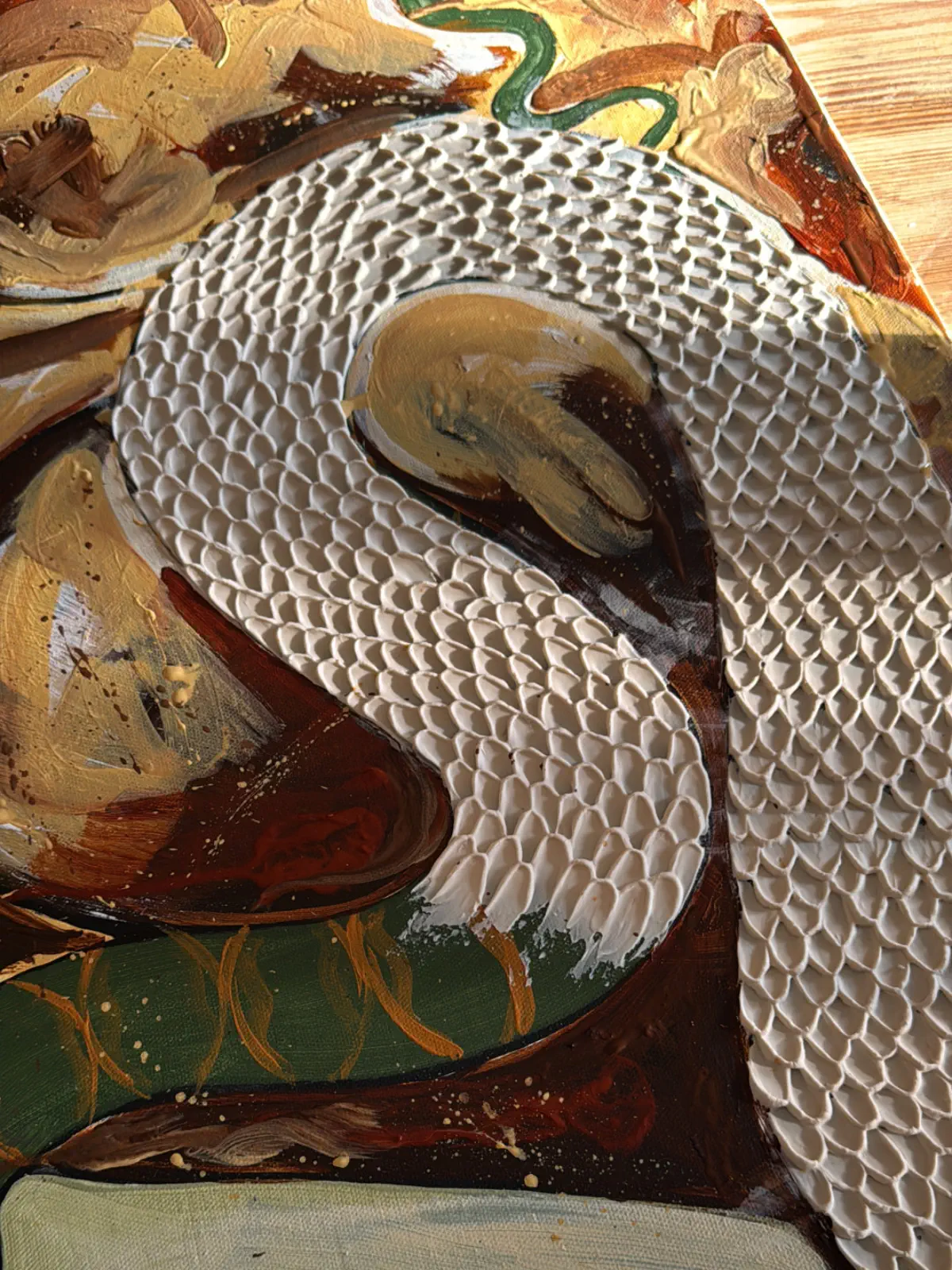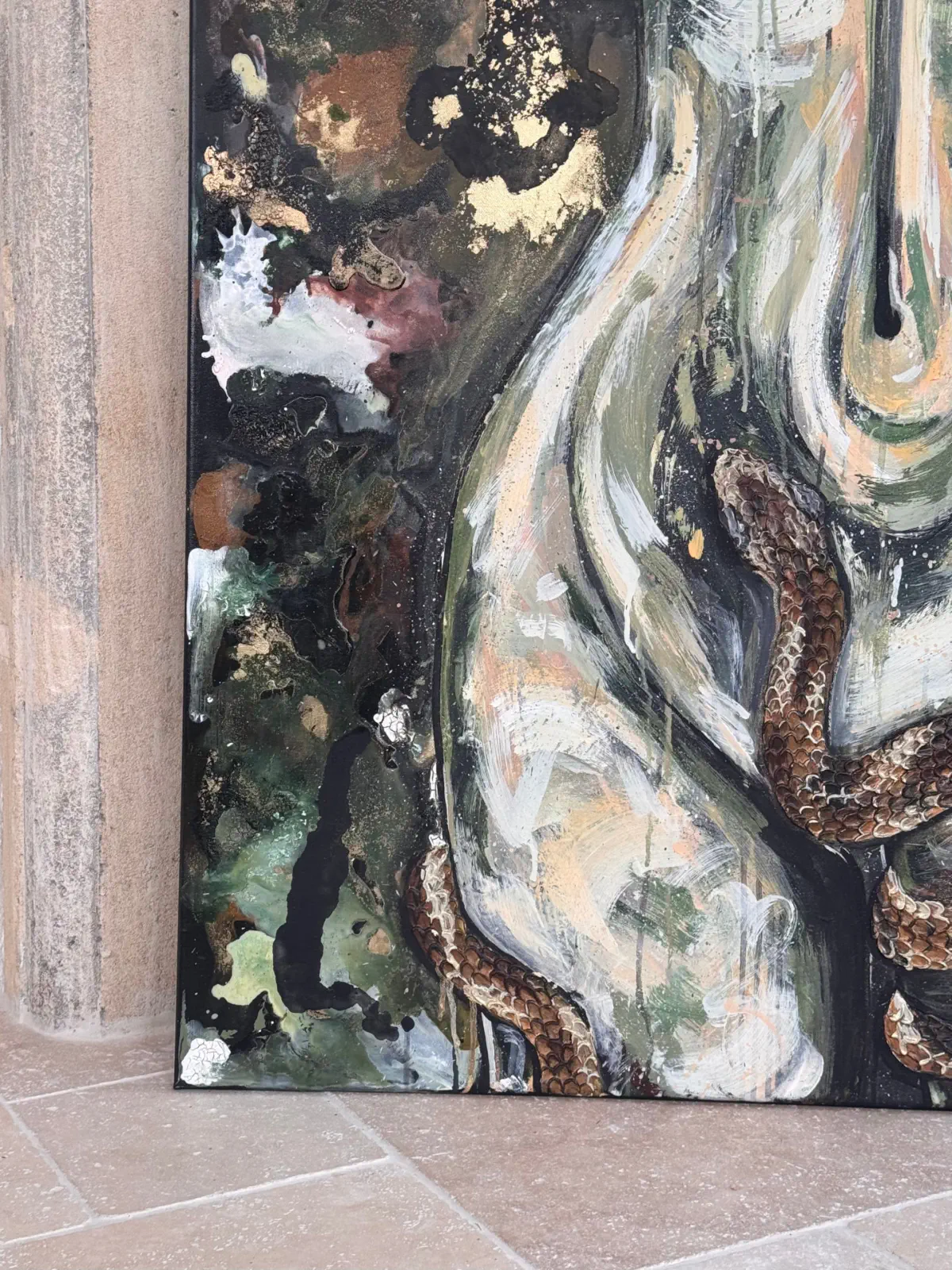Story behind the artwork
This painting reclaims Medusa’s story – not as one of monstrosity, but of survival, defiance and power. Her transformation has previously been framed as a curse, when in reality it was her form of protection. No man could violate her again, and for that, she was feared. Like many women throughout history her pain was rewritten, dismissed or used against her, ensuring those who harmed her escaped accountability.
Her beheading was not a victory – it was an act of control. The celebration of her destruction reinforced the idea that female strength is only acceptable when it serves men. Medusa’s fate is more than just an ancient myth; it reflects the harmful narratives that punish women for surviving, turning their pain into something grotesque while excusing those who caused it.
Despite everything, her power was never truly erased. Medusa has become a symbol of defiance, her story reclaimed by generations of women who refuse to be silenced. This painting is part of that ongoing reclamation. Through art, protest and collective resistance, women continue to defy the gaze that sought to define them, turning Medusa’s legacy into one of strength rather than shame.
Visual elements
By removing Medusa’s head, the painting rejects the traditional portrayal of her power lying in her gaze. Instead, her body alone carries the weight of her story, shifting the focus from how she was seen to the strength of her existence. This choice challenges the idea that Medusa was only dangerous because of her ability to turn men to stone — her true power was her survival, defiance, and refusal to be controlled.
The snakes intertwine with her body, becoming an extension of her rather than a curse. Their movement is both protective and possessive, embracing her rather than attacking. The textured, stone-like quality of her body makes her feel ancient and eternal, suggesting that despite history’s attempts to vilify her, she remains unshaken. Her form holds internal energy — a quiet but unyielding force.
The chaotic background contrasts with the controlled tones of her body, reflecting the distortion of Medusa’s story over time. Drips of paint streak down her body like blood, symbolizing both suffering and transformation. These marks do not diminish her; instead, they blend into her form, reinforcing the idea that pain and power are interwoven. The dark, textured background evokes the cultural forces that have shaped Medusa’s narrative — the chaos of misunderstanding and vilification. Gold elements elevate the painting, embodying the concept of divine femininity. This choice represents the idea that Medusa, and by extension all women, possess an inherent power that cannot be erased, no matter how much the world tries to silence them.
Meaning behind the artwork
This painting is a statement on injustice, illustrating how women’s pain, anger, and survival are often rewritten to uphold patriarchal myths. Medusa’s story is a metaphor for how society twists a woman’s suffering into something monstrous, blaming her instead of confronting the harm done to her. This narrative speaks to victim-blaming, the erasure of female autonomy, and the way women’s strength is feared rather than understood. Patriarchal systems have historically sought to control and silence women, turning power into something threatening rather than admirable.
Medusa was not simply seen — she was possessed, punished, and destroyed when she could no longer be controlled. Her beheading was celebrated, reinforcing the harmful idea that women’s power is only acceptable when it serves men. Yet, despite these attempts, Medusa’s power was never extinguished. Her transformation from victim to symbol of defiance speaks to the ongoing fight for female autonomy.
This artwork invites you to critically reflect on the narratives imposed on women, encouraging personal reflection on injustice and resilience. Medusa’s reclaimed legacy stands as a testament to the strength of women — a reminder that even when patriarchal systems seek to silence them, their power endures.
Display recommendations
Size: 48” x 36”
Medium: Acrylic paint and paste on canvas
This artwork is best displayed as a bold centrepiece, placed against a dark or neutral-toned wall to highlight its intricate textures and contrast. Use soft, directional lighting to accentuate the details, particularly the gold elements and emotional depth. Pair it with minimalist decor to keep the focus on the piece, and consider positioning it in a place that invites reflection.

